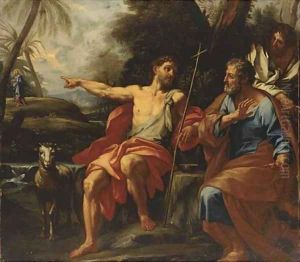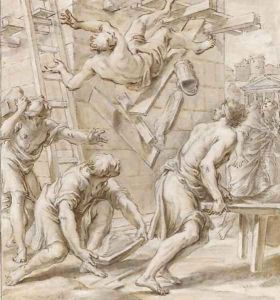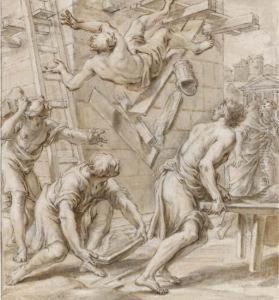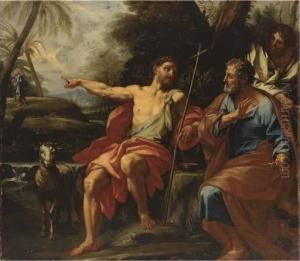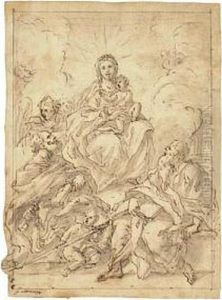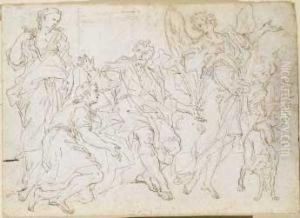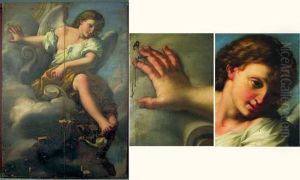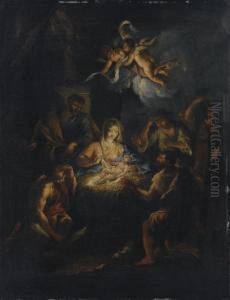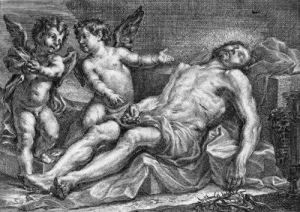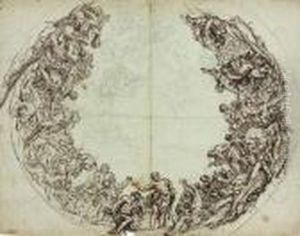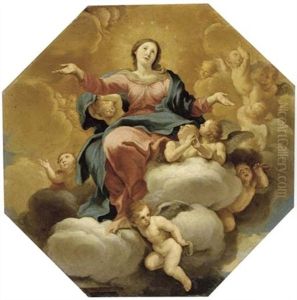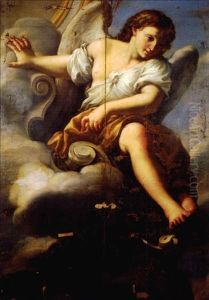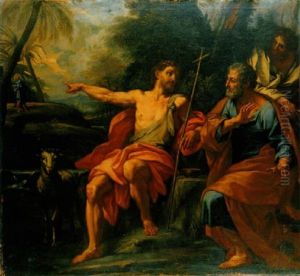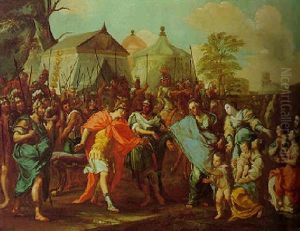Niccolo Ricciolini Paintings
Niccolo Ricciolini was an Italian painter born in 1687 in Fabriano, a town in the Marche region of Italy. He is known for his work in the Baroque style, which was prominent during his lifetime. Ricciolini initially trained under his father, who was a painter, before moving to Rome to further his studies. In Rome, he became a student of Benedetto Luti, an accomplished painter of the time.
Ricciolini's work primarily consisted of religious and mythological subjects, and he was known for his ability to depict figures with grace and movement. His style was influenced by the works of the great Baroque artists such as Caravaggio and Bernini, yet he also incorporated some of the lighter Rococo elements that were becoming popular later in his career.
Throughout his life, Ricciolini received commissions from various churches and patrons, allowing him to create large-scale frescoes as well as smaller oil paintings. Some of his notable works include frescoes in the churches of Sant'Andrea della Valle and San Silvestro al Quirinale in Rome. Ricciolini's paintings were characterized by their vibrant colors, dramatic light and shadow contrasts, and dynamic compositions.
Despite his talent and contributions to the Italian Baroque, Ricciolini is not as widely known as some of his contemporaries. This is partly due to the overshadowing fame of other artists from his era and the changing tastes in art over the centuries. Nevertheless, his works are still appreciated by art historians and collectors for their beauty and technical skill.
Niccolo Ricciolini passed away in 1772, leaving behind a legacy of artwork that continues to be studied and admired for its embodiment of Baroque artistry and its transition towards the Rococo style.
